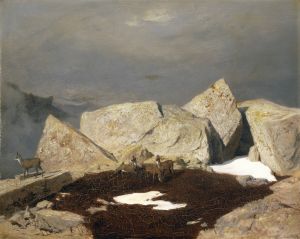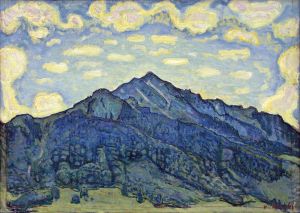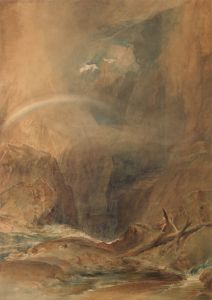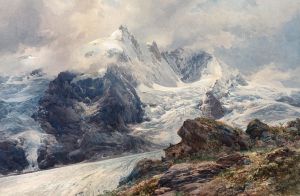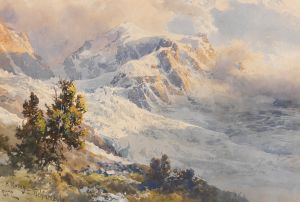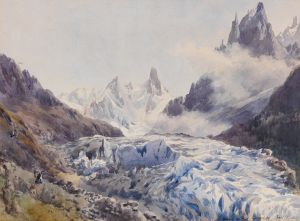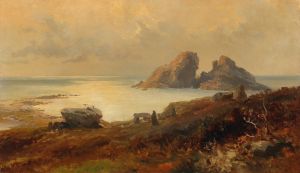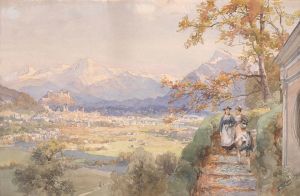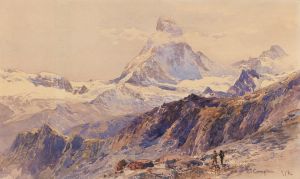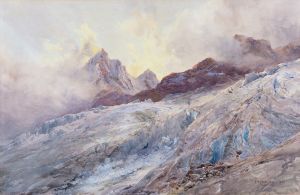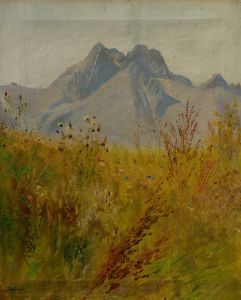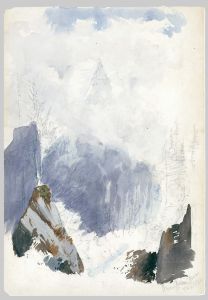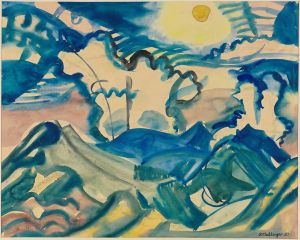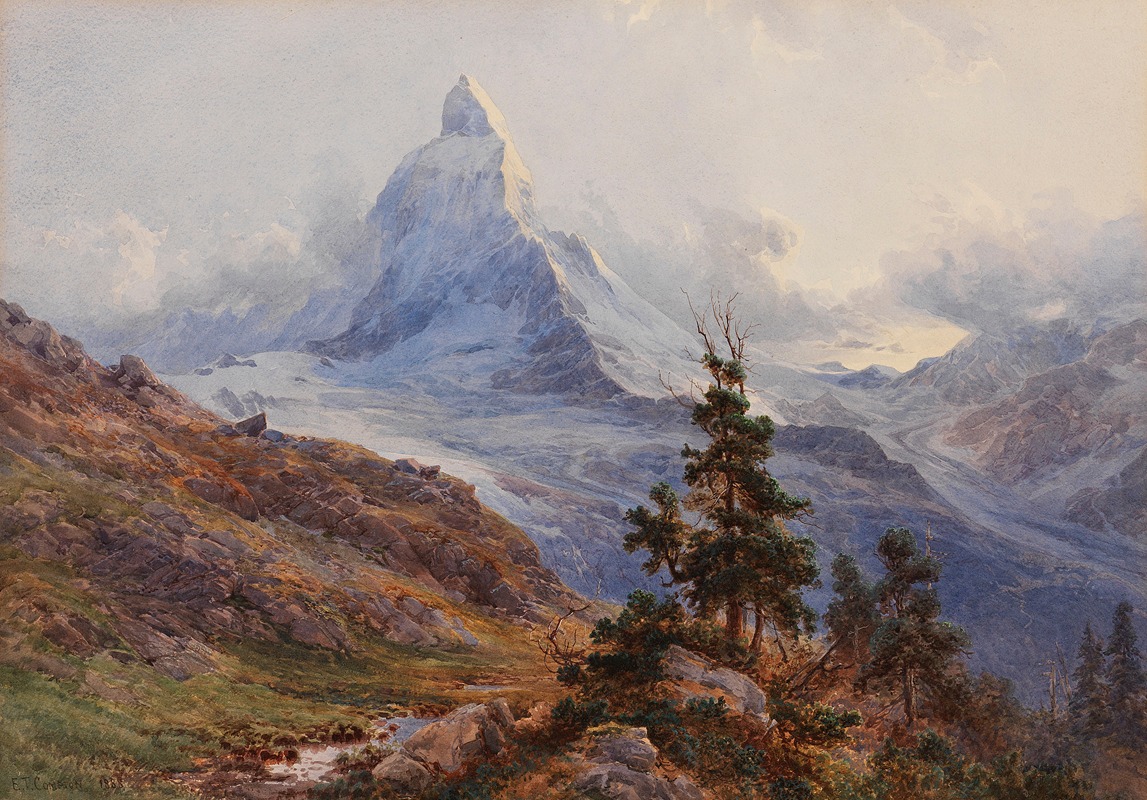
View of the Matterhorn
A hand-painted replica of Edward Theodore Compton’s masterpiece View of the Matterhorn, meticulously crafted by professional artists to capture the true essence of the original. Each piece is created with museum-quality canvas and rare mineral pigments, carefully painted by experienced artists with delicate brushstrokes and rich, layered colors to perfectly recreate the texture of the original artwork. Unlike machine-printed reproductions, this hand-painted version brings the painting to life, infused with the artist’s emotions and skill in every stroke. Whether for personal collection or home decoration, it instantly elevates the artistic atmosphere of any space.
Edward Theodore Compton was a renowned English-born artist and illustrator, celebrated for his detailed and evocative landscapes, particularly those depicting the Alps. Among his notable works is "View of the Matterhorn," a painting that exemplifies his mastery in capturing the grandeur and majesty of mountainous terrains.
Compton was born on July 29, 1849, in Stoke Newington, London. He developed an early interest in art and nature, which was further nurtured by his family's move to Germany in 1867. This relocation proved pivotal, as it brought him closer to the Alpine landscapes that would become the primary focus of his artistic career. Compton's fascination with mountains was not limited to their aesthetic appeal; he was also an avid mountaineer, which allowed him to experience these natural wonders firsthand.
"View of the Matterhorn" is a testament to Compton's dual passion for art and mountaineering. The Matterhorn, one of the most iconic peaks in the Alps, straddles the border between Switzerland and Italy. Its distinctive pyramid shape and challenging climbing routes have made it a symbol of the Alpine region. Compton's depiction of the Matterhorn captures not only its physical form but also the atmosphere and mood of the surrounding landscape.
In his portrayal of the Matterhorn, Compton employed a meticulous attention to detail, a hallmark of his artistic style. His use of light and shadow effectively conveys the ruggedness and texture of the mountain's surface, while the surrounding elements, such as the sky and foreground, are rendered with a sense of harmony and balance. This ability to blend realism with an almost romantic sensibility is a defining characteristic of Compton's work.
Compton's paintings are often noted for their accuracy, a result of his direct observations and experiences in the mountains. His commitment to authenticity is evident in "View of the Matterhorn," where the geological features and atmospheric conditions are depicted with precision. This dedication to realism did not detract from the emotional impact of his work; rather, it enhanced the viewer's appreciation of the natural beauty and grandeur of the scene.
Throughout his career, Compton produced numerous paintings and illustrations of the Alps, contributing significantly to the visual documentation of these landscapes during the late 19th and early 20th centuries. His works were widely exhibited and appreciated, earning him a reputation as one of the foremost Alpine painters of his time.
Edward Theodore Compton passed away on March 22, 1921, in Feldafing, Germany. His legacy endures through his art, which continues to inspire and captivate audiences with its blend of technical skill and deep appreciation for the natural world. "View of the Matterhorn" remains a quintessential example of Compton's ability to convey the awe-inspiring beauty of the Alps, reflecting both his artistic talent and his personal connection to the mountains he so loved.





